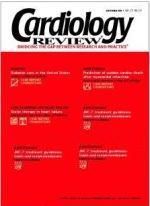Case report: PCI of a total coronary occlusion
A 66-year-old man with hypertension and dyslipidemia was referred to our center because of a 2-year history of chronic angina on effort. Results of an exercise stress test were positive for chest pain and ischemic electrocardiographic changes after 5 minutes at a 50-watt workload. Coronary angiography showed a complete calcified occlusion of the mid-left anterior descending artery (figure 1), with good filling of the distal vessel from collateral flow supplied by the right coronary artery. The left ventricular ejection fraction was normal (66%), with mild hypokinesia of the apical wall.
A percutaneous coronary intervention (PCI) was attempted with an intermediate wire that progressed through the occluded segment and entered a diagonal branch. A second, stiffer wire was advanced, but it could not reach the distal vessel. The right coronary artery was cannulated via the contralateral femoral artery. The retrograde fill-ing of the left anterior descending artery allowed the operator to direct the stiff wire into the distal vessel (figure 2).
After balloon dilatation, moderate diffuse disease was apparent. The operator decided to implant a relatively short stent (12 mm long and 3.0 mm in diameter) at the site of the occlusion. Figure 3 shows the final result after balloon dilatation and stent implantation. The patient was discharged and was prescribed ticlopidine for 1 month. Aspirin, an angiotensin converting enzyme inhibitor, and an HMG-CoA reductase inhibitor (statin) were prescribed indefinitely. At the 9-month clinical follow-up, the patient was asymptomatic. Results of the exercise stress test were negative at a 125-watt workload, with a maximal heart rate of 148 beats per minute.
